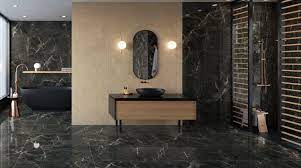Tiles are an essential consideration when finishing buildings, whether residential or commercial. They offer aesthetic appeal, durability, and ease of maintenance. However, with the wide range of tile options available in the market, selecting the right type can be overwhelming. This article delves into the best types of tiles in Kenya and provides a detailed buying guide to help you make an informed decision based on your specific needs.
Factors to Consider When Choosing Tiles
When purchasing tiles, various factors come into play, including the intended use, durability, appearance, and cost. Here’s what you need to keep in mind to ensure you choose the right tiles for your space:
- Type of Tile
- Area of Application (Where the Tiles are Needed)
- Appearance and Design
- Cost of Tiles and Installation
Let’s explore each factor in detail.
1. Best Types of Tiles in Kenya
Tiles are classified based on the materials they are made from. Each type serves a different purpose and offers varying levels of durability, water resistance, and aesthetic appeal. Here are the best tile options available in Kenya:
a. Ceramic Tiles
Ceramic tiles are among the most common and widely used tiles in Kenya. Made from a mixture of clay, sand, and water, ceramic tiles are treated in a kiln to create a hard, water-resistant surface. They are suitable for both floors and walls and are available in various colors, patterns, and finishes, making them a versatile choice for interior design.
- Advantages: Durable, affordable, and available in a wide range of designs.
- Disadvantages: Prone to cracking when heavy objects are dropped and can feel cold underfoot.
Cost: Ceramic tiles are among the most affordable options in the Kenyan market.
b. Porcelain Tiles
Porcelain tiles are made from dense clay materials, making them heavier, thicker, and more durable than ceramic tiles. These tiles often mimic the appearance of natural stone, giving them a sophisticated look. Porcelain tiles are more water-resistant than ceramic tiles, making them suitable for both indoor and outdoor use.
- Advantages: Highly durable, water-resistant, and stylish.
- Disadvantages: More expensive than ceramic tiles and can break under heavy impact.
TIP: If you need tiles for outdoor areas, opt for porcelain tiles due to their water resistance. For indoor spaces, ceramic tiles may be a better budget-friendly option.
c. Stone Tiles
Stone tiles, made from natural stones like granite, marble, or slate, are known for their luxurious appearance. These tiles are excellent for areas with high foot traffic, such as kitchens, patios, and entryways, as they are durable and resistant to wear and tear.
- Advantages: Provide a natural, elegant look and are highly durable.
- Disadvantages: Expensive and not slip-resistant, making them risky for use in wet areas.
d. Glass Tiles
Glass tiles are made from thin, glazed translucent glass materials and can be customized to create unique patterns and designs. These tiles are commonly used for wall installations and add a modern, sleek touch to any space.
- Advantages: Durable, easy to clean, and aesthetically appealing.
- Disadvantages: Expensive and less suited for flooring due to fragility.
2. Where Are the Tiles Needed?
Different rooms in your home or building will require different types of tiles based on their function and exposure to elements such as water or foot traffic. Here’s a breakdown of the best tile choices for different spaces:
a. Kitchen Tiles
- Floor: The kitchen floor tiles should be slip-resistant and durable. Porcelain and ceramic tiles are ideal for kitchen floors. Choose tiles with rough surfaces to minimize the risk of slipping, as kitchens are often wet.
- Wall: For the kitchen walls, you can opt for decorative ceramic tiles. Bright colors and patterned designs are ideal for enhancing the aesthetic appeal of your kitchen.
b. Bathroom Tiles
- Floor: Slip-resistance is critical when selecting bathroom floor tiles. Porcelain and ceramic tiles with rough textures are recommended to prevent accidents in wet environments.
- Wall: Bathroom wall tiles do not need to be slip-resistant. Light-colored, plain tiles are recommended to give a bright and airy appearance to the bathroom.
c. Other Room Tiles (Living Room, Dining Area, Office)
For other rooms like living areas and offices, tiles with aesthetic appeal are crucial. Ceramic and porcelain tiles are popular choices due to their durability and variety of patterns and colors. You can also use stone or wood-look tiles to give a unique appearance to these spaces.
3. Appearance and Design
Tiles come in a wide range of colors, patterns, and textures. Some tiles are even designed to resemble natural materials like wood or stone. Your choice of design should complement the overall interior design of the space you are tiling. For example, wood-look ceramic tiles can give your living room a warm, rustic feel, while glass tiles can add a modern touch to your kitchen walls.
If you’re unsure of the best design for your space, consult an interior designer or check online for inspiration.
4. Cost Considerations
Tile cost is influenced by factors such as material, size, design, and brand. Ceramic tiles are the most affordable, while natural stone and glass tiles are more expensive. In addition to the cost of the tiles, factor in the cost of installation and any ongoing maintenance.
- Installation Cost: This varies depending on the complexity of the design and the type of tile being installed.
- Maintenance Cost: Some tiles require more maintenance than others. For instance, stone tiles may need to be resealed regularly to maintain their appearance and durability.
Choosing the best tiles for your building project involves careful consideration of several factors, including the type of tile, the room where the tiles will be installed, appearance, and cost. Ceramic and porcelain tiles are the most popular and versatile options in Kenya, but you can also explore stone and glass tiles for a more luxurious look. Make sure to consult with your supplier or a construction professional to ensure that the tiles you select meet both your aesthetic preferences and functional needs.
With this guide, you are now well-equipped to make an informed decision on the best tiles for your home or business. Happy tiling!





